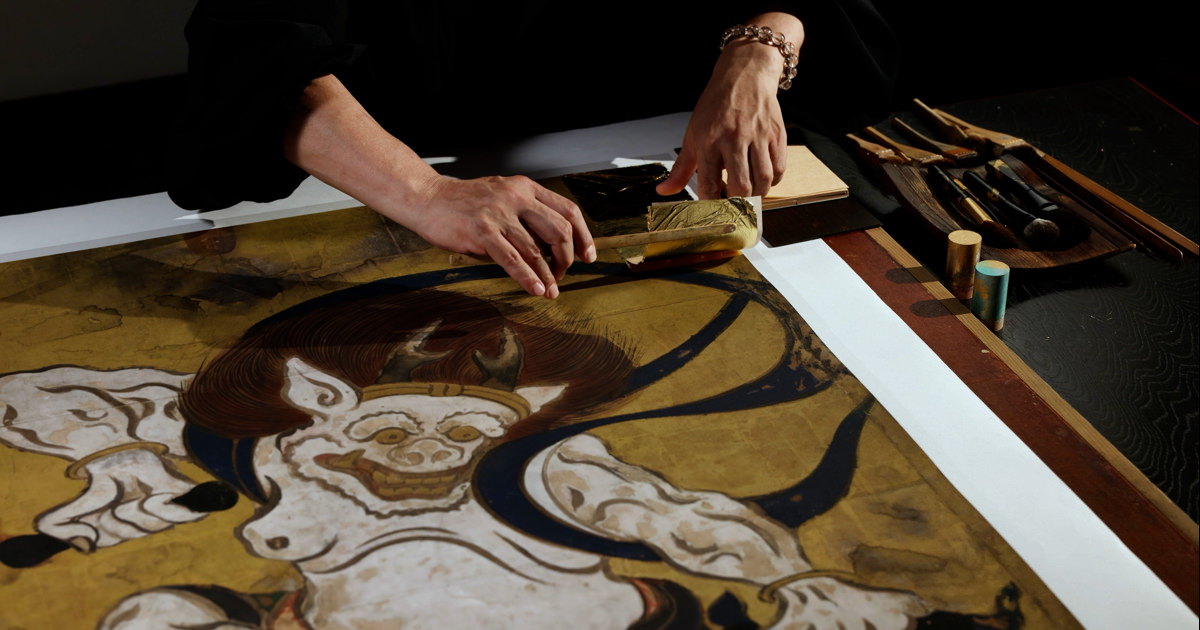Peafowl and Phoenixes
High-resolution facsimiles
- Material
- printed, gold on washi paper
- Period of creation
- Tsuzuri Project Stage 17 2024–2025
- Recipient
- Kuboso Memorial Museum of Arts,(Izumi City)
Original
- Artist
- Attributed to Tosa Mitsuyoshi
- Historical era
- Momoyama (16th Century)
- Material
- Ink, color, and gold on paper
- Medium
- Pair of six-fold screens
- Size
- Each screen H160.5 × W362 cm
- Collection
- Cleveland Museum of Art
Description
A splendid and luxurious pair of six-panel folding screens with a golden background, featuring phoenixes on the right screen and peafowl on the left, set against a backdrop of paulownia trees and bamboo. In ancient China, the phoenix was believed to dwell in the blue paulownia tree and feed on bamboo, with its appearance venerated as portending the birth of an excellent ruler. The peafowl, known for eating poisonous snakes, was regarded as a bird imbued with spiritual power that wards off evil. The combination of the two was favored as a motif of good omens.
The spring season is represented on the right screen, symbolized by violets and horsetail depicted near the phoenixes' feet, while the autumn season is reflected on the left screen, represented by gentians and Chinese lanterns surrounding the peafowls.
The artist is believed to be Tosa Mitsuyoshi (1539–1613), based in the emerging city of Sakai in the Izumi province (now southern Osaka Prefecture), due to characteristic features of the depiction.
This work is noted for its similarities to the “Flowers and Birds of the Four Seasons” by Kano Motonobu, held by the Hakutsuru Art Museum (reproduced as part of the Tsuzuri Project Stage 2), drawing attention as evidence of the Tosa school‘s study of the Kano school.




